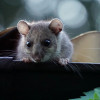Why are gain of function experiments useful?
Interview with
Chris Smith spoke with flu expert and virologist at the University of Glasgow, Ed Hutchinson about researchers creating a form of avian flu that could possibly spread between humans...
Ed - So there was this huge question hanging over the influenza field. We knew that influenza was very good at jumping from birds into humans, because that was where previous pandemics had come from. We knew there was this really nasty strain of highly pathogenic H5N1, avian influenza as it was called, that was quite often making people very sick, but we didn't know whether that had pandemic potential. And it wasn't at all obvious how you could, using sort of standard methods, address that question. And then at this conference Ron Fouchier, who is one of the world's most highly respected flu researchers, stood up and basically said, well, we've answered the question. We took a strain of H5N1 influenza virus, we gave it a little bit of a head start knowing what adaptations it would normally take getting used to growing in mammals, and in a very secure facility, we looked to see if it could become transmissible in ferrets and it could. And instantly that answered the question. From that point on, we knew that H5N1, at least in principle, could become a pandemic virus, and it was therefore entirely legitimate to monitor H5N1 strains and to put a lot of effort into making sure that never happened.
Chris - Well we've actually got a clip of Ron Fouchier at that conference where he announced he'd been doing the work. So let's have a listen to how he described his findings...
Ron - We borrowed evidence from a previous pandemic, when avian viruses changed and caused infections in humans. And some of the changes that occured in those pandemic viruses we have introduced by genetic manipulation into an H5N1 virus. And that H5N1 virus now replicates in the upper respiratory tract of mammals. Now that virus has many of the hallmarks of a pandemic virus but we found initially that it was still not transmitted. It was very surprising. And so what we did then was to put it into a mammal and let the virus adapt to the mammal for a few rounds and then take that virus and then that virus will become transmissible. And so by intelligent experiments we were able to introduce three mutations into the virus that were necessary, and then because we didn't know the rest of it, we let the mammals do the rest of the story and they accumulated two or three additional mutations. And those five or six mutations are enough to make this virus transmissible.
Chris - Ron Fouchier speaking to me back in 2011. So Ed, interestingly in that instance, they did it by effectively encouraging the virus to change in its natural way. They weren't actually tinkering with it genetically. Other scientists have done things slightly differently by taking samples that actually came out of the permafrost, for example, of people who were victims of the 1918 Spanish flu and they've recreated the 1918 Spanish flu. Was that with the same aim in mind? To try to understand what it takes for a virus, not just to be flu, but to be a really nasty flu?
Ed - So that was a separate study, one which took place slightly sooner, but actually raised a lot of the same concerns because you've created something which didn't exist before which is potentially dangerous. That experiment there was not answering the question, "could this virus become a pandemic?" Because we knew it did. The 1918 influenza, the great influenza as it is sometimes called, is still by most measures, even today, the worst pandemic we have a record of, but at the time we didn't know why that was so dangerous. So once again, working in a very, very controlled way, the researchers were able to bring back from the dead this virus and work out what had made it so dangerous so that we could protect ourselves against similar viruses in the future. You kind of hope that the first thing to be brought back from extinction would be something a bit more cuddly or exciting, but actually it did turn out to be this virus.
Chris - One of the most deadly diseases we've ever encountered! Did it deliver in the respect that the aim was laudable, as you've said, to try to understand whether these things can become pandemics and what it takes for them to do that, or how do they cause severe disease, are we better endowed with knowledge about flu biology and its threat that it poses to us because of these experiments?
Ed - Sure. So I think, the two studies are separate, but if we look at the H5N1 study, so this question of "could H5N1 influenza viruses adapt to humans?" There were two types of answers you could get from that study - there's a specific answer and a general answer. The specific answers are what kind of changes would the virus need to gain in order to start becoming an efficient mammal virus rather than an efficient bird virus, and we got some answers out of that, and some answers which we'd never known about before. But influenza is a complicated machine and you can fine tune it in many different ways. So although we learned some of the ways in which influenza could adapt to humans, we didn't spot all of them. And indeed the next part of it which came along, which was in 2009, blindsided us because it tweaked a whole set of different features of virus which hadn't cropped up in this study. So it showed us some specific features, some things to watch out for, but it didn't highlight all of the possible ways in which this very changeable virus could adapt to humans. But in general terms, it answered the question definitively "can highly pathogenic H5N1 influenza viruses adapt to become transmissible in mammals?" And the answer was very, very clearly yes, because they showed that it happened and that's an unambiguous answer.
Chris - Are there any ways that scientists could have arrived at the same point with that knowledge in hand without having to do this research, this gain of function research, to create potentially extremely devastatingly dangerous pathogens?
Ed - It's very hard to see how that general question could have been answered in any other way. However, this study published a huge amount of focus on how these studies can be carried out and what people have put a lot of effort into since is to work out ways to do these things even more safely. So we already had very good secure labs, but, for example, there are now ways to break the virus at the same time as you fix it in other ways to ensure that, even if you generate something which is better in some respects, it's not going to be capable of thriving in the outside world.









Comments
Add a comment